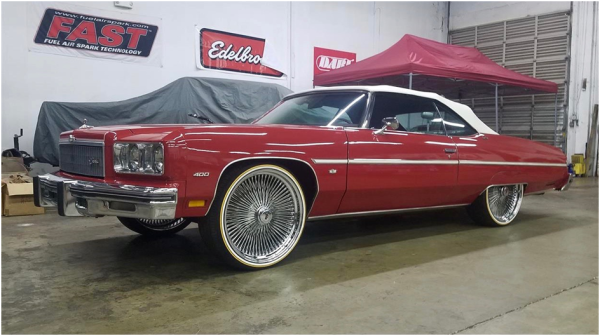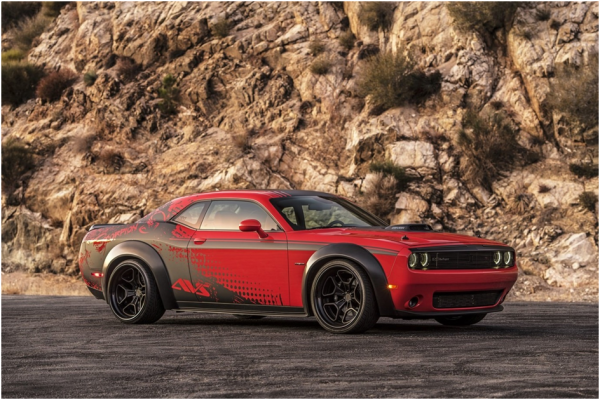The big wheel trend started roughly at the same time as the muscle cars. The cars were powerful and fast, but the OEM wheels and tires weren`t. During the `60s and `70s, it was typical for the majority of muscle cars to have narrow wheels. Unfortunately, for car enthusiasts, it meant that they had to look for wider wheels and tires that could match the torque and performance potential. Narrow wheels are not the case nowadays, but the trend still thrives. The true fans of muscle cars often resort to upgrading bigger wheels to larger sizes and wider tires. However, although this modification is common, it doesn`t mean it has no pitfalls. Changing wheel size entails more changes to the performance and other specs. It alternates the way your car behaves in different situations and conditions. If done wrong, it can cause problems and often create a custom wheel offset as a result.

We will break down the most common questions to make the outcome more predictable.
Why Do Muscle Cars Need Big Tires?
Larger wheels are not just a cool stylistic choice for muscle cars. They are almost inseparable from their concept. Their purpose goes far beyond granting that iconic look, it supports the most crucial features that define what muscle cars are all about.
Although they are built for speed and performance, they have a few unique traits that differentiate them from sports cars. Aside from the overall size and better ground clearance, they are most loved for powerful engines that push them forward and allow greater speed. And that is why the engine-wheels synergy is so important. All the benefits go out of the window without a set of wheels that can match the engine performance.

What Do Larger Wheels Do For A Muscle Car?
Their purpose is simple and clear. Bigger tires equal larger contact patches. And this is a very important addition to muscle cars. In contrast with the sports cars, they are much bulkier and lack aerodynamics that glues them to the road. So, naturally, larger tires provide a better grip and improve handling a lot. This helps with another issue as well. Muscle cars work best on a straight road. And sometimes, having larger tires can add more stability during the turns.
And since wheels are actually the part that transforms the engine power into motion, they must be appropriately fitted to accomplish this task. The best results come from wider tires. The more traction you can get, the better if your muscle car is built to accelerate fast and fly forward. Plus, your car`s traction will drop proportionately as you go faster. So getting a set of wider tires will save you some extra area.
Another great perk is increased braking performance. If your brakes are durable and strong enough for heavier and larger wheels, big tires can make the braking distance shorter thanks to their size. This is a valuable safety bonus for a fast and bulky vehicle.
Balancing Traction & Handling
The benefits are obvious, but there are also a few things to consider before you upsize. Many muscle car owners encounter the most common issue of poor handling in bad weather conditions. While larger tires provide superior vehicle control on a dry road, things often go south whenever it rains or snows. Sliding can happen even though wider tires are generally considered better for the wet road.
This happens because wider tires fail to squeeze out all the excess water from the contact patch, reducing the traction. “Wide wheels are much more prone to hydroplaning,” says Oliver Brown, Data Coordinator at Wheelssize.com. “They push the water out less efficiently than narrower alternatives. But deep tread makes them work better.”
Many car enthusiasts install smaller wheels on the front end and larger ones on the rear end. This helps gain a little more handling while maintaining superior traction. Since muscle cars usually have rear-wheel drive, this makes perfect sense. But this method comes with a few nuances. You must ensure the suspension is appropriately aligned and that this build does not create any problems for crucial elements. Also, get ready for faster tire wear due to mismatched tire sizes. And the handling is still not great.

Another thing you could do to aid steering is to use lighter rims. Remember that when you choose wider tires for the muscle car, the wheels must often be replaced to accommodate another tire size. And bigger rims combined with bigger tires put extra weight on the braking and steering. This extra weight also has an impact on fuel consumption and speed. So choosing lighter rims can be beneficial if you do not compromise their durability in favor of this small edge.
Is It Bad To Put Bigger Rims On Your Car?
It`s tempting to say that putting beefy wheels is okay. However, it is only okay when good preparation comes before this decision. Many things can go awry because of straying from the OEM sizing. The most obvious issue is whether they can fit or not. It`s important to install the wheels in a way that protects the rubber and fenders from friction. Sometimes fenders must be rolled out to fit new wheels and give them some space. If that doesn`t help, you can use fender flares. They can easily transform the look of your vehicle as well.
Another thing to consider is wheel offset. New rims and wider tires will affect this specification. So when you pick aftermarket parts, keep in mind that your new offset must not differ from the recommended by more than 5 millimeters. Sometimes wheel spacers can help fit larger wheels and adjust the offset, but they can be tricky sometimes. It is always better to have a few references on trustworthy suppliers from your fellow muscle car enthusiasts.
There is one more quite radical approach to fitting larger and taller wheels.
Bottom Line
Muscle cars are all about passion for driving, speed and aesthetics. However, any modifications must be through. Your first priority must be in making those adjustments safe for people and the car.
Ensure that your suspension, brakes and steering can handle larger wheels perfectly.
Drive safely!
Written by Charles Farrell

